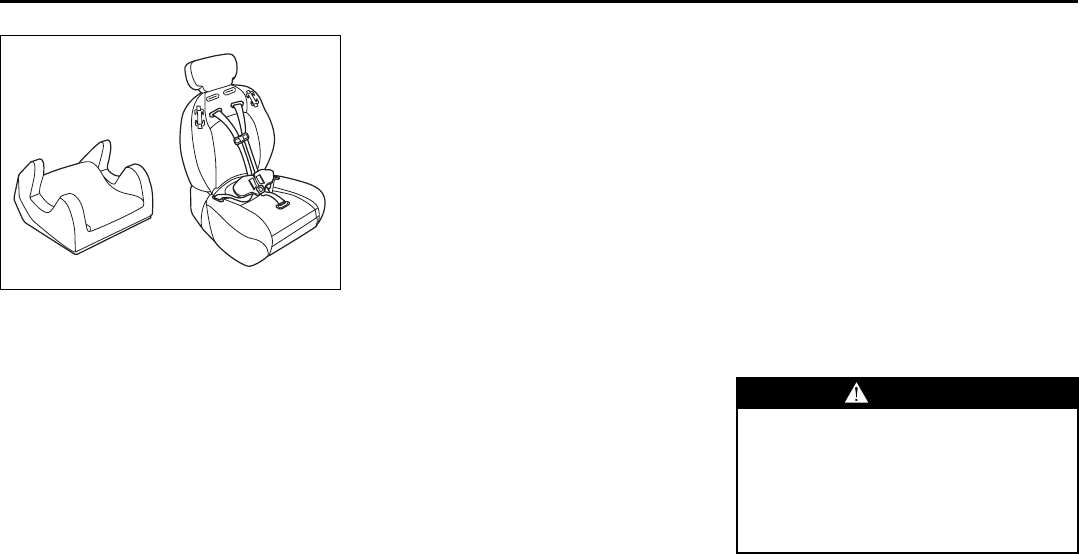
1-20
SEATS AND RESTRAINT SYSTEMS
85Z04-03E
A booster seat (F–G) is a child restraint
designed to improve the fit of the vehicle’s
safety belt system. Some booster seats
have a shoulder belt positioner, and some
high-back booster seats have a five-point
harness. A booster seat can also help a
child to see out the window.
Question: How do child restraints
work?
Answer: A child restraint system is any
device designed for use in a motor vehicle
to restrain, seat, or position children. A
built-in child restraint system is a perma-
nent part of the motor vehicle. An add-on
child restraint system is a portable one,
which is purchased by the vehicle’s owner.
For many years, add-on child restraints
have used the adult belt system in the
vehicle. To help reduce the chance of
injury, the child also has to be secured
within the restraint. The vehicle’s belt sys-
tem secures the add-on child restraint in
the vehicle, and the add-on child restraint’s
harness system holds the child in place
within the restraint.
One system, the three-point harness, has
straps that come down over each of the
infant’s shoulders and buckle together at
the crotch. The five-point harness system
has two shoulder straps, two hip straps
and a crotch strap. A shield may take the
place of hip straps. A T-shaped shield has
shoulder straps that are attached to a flat
pad which rests low against the child’s
body. A shelf- or armrest-type shield has
straps that are attached to a wide, shelf-
like shield that swings up or to the side.
When choosing a child restraint, be sure
the child restraint is designed to be used in
a vehicle. If it is, it will have a label saying
that it meets federal motor vehicle safety
standards.
Then follow the instructions for the
restraint. You may find these instructions
on the restraint itself or in a booklet, or
both. These restraints use the belt system
in your vehicle, but the child also has to be
secured within the restraint to help reduce
the chance of personal injury. When secur-
ing an add-on child restraint, refer to the
instructions that come with the restraint
which may be on the restraint itself or in a
booklet, or both, and to this manual. The
child restraint instructions are important,
so if they are not available, obtain a
replacement copy from the manufacturer.
Where to Put the Restraint
All child restraint systems are designed to
be secured in vehicle seats by either safety
belts (lap belts or the lap portion of lap-
shoulder belts) or by special rigid lower
anchor bars built into the seats. Whenever
possible, SUZUKI recommends that child
restraint systems be installed on the rear
seat. According to accident statistics, chil-
dren are safer when properly restrained in
rear seating positions than in front seating
positions. Never put a rear-facing child
restraint in the front passenger seat.
Here’s why:
(F) (G)
L3U1044A
WARNING
A child in a rear-facing child restraint
can be severely injured or killed if the
right front passenger’s frontal air bag
inflates. This is because the back of
the rear-facing child restraint would
be very close to the inflating air bag.
(Continued)
Child Restraints:


















